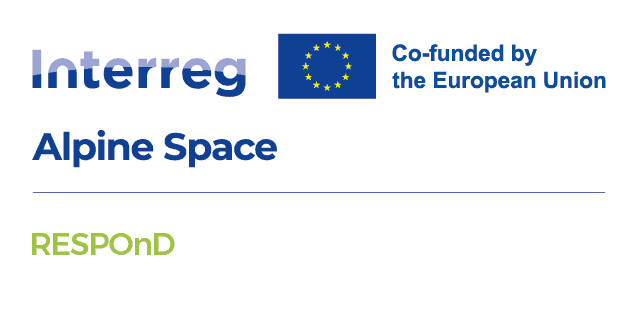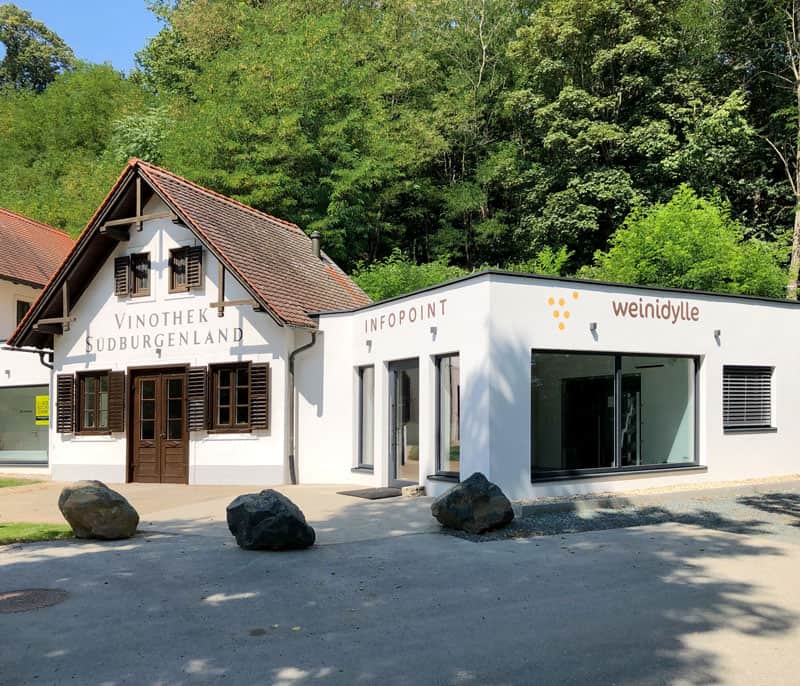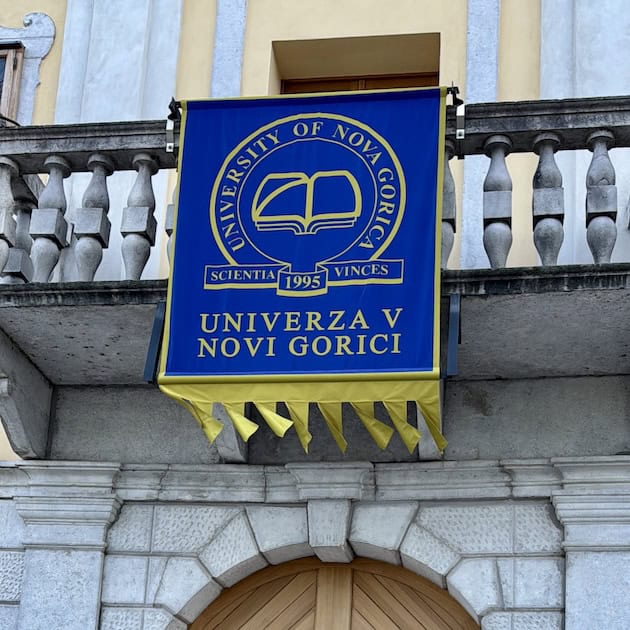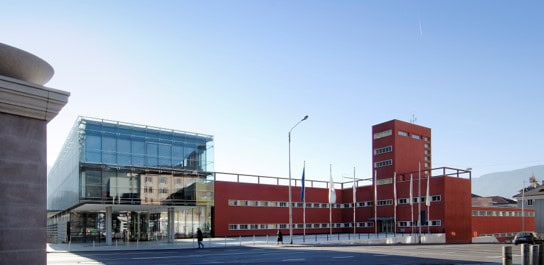
Overview
Small-scale Alpine vineyards represent a remarkable blend of culture, economy, and ecology. Yet, Alpine Wine Orchards (AWO) are increasingly threatened by water deficits and drought stress, and by extreme weather events, which are leading to a decline in wine quality and threatening the sustainability of the wine sector. This jeopardises traditional cultivation practices and activities that have shaped local identities, cultural heritage, and economies for centuries. RESPOnD co-designs Ecosystem-based Adaptation (EbA) and sustainable development solutions with wine practitioners and decision-makers. By validating EbA solutions on the ground and disseminating the knowledge, RESPOnD will contribute to the transition towards climate-resilient management and governance of AWO.
Factsheet
- 2021 – 2027
- Climate resilient and green Alpine region
- SO 1.1 - Promoting climate change adaptation and disaster risk prevention, resilience, taking into account eco-system based approaches
-
- AG3 Labour market, education and training
- 09/2024
- 08/2027
- 2.210.915 EUR
- 1.658.186 EUR
Partners
- Lead partner
- Italy
- Provincia Autonoma di Bolzano/Bozen (ITH1)
- Bolzano
- Lukas Egarter Vigl
- lukas.egarter@eurac.edu
- Italy
- Liguria (ITC3)
- Riomaggiore
- Matteo Perrone
- Matteo.perrone@parconazionale5terre.it
- Italy
- Valle d’Aosta/Vallée d’Aoste (ITC2)
- Aymavilles
- Aline Vierin
- progetti@cervim.it
- France
- Alsace (FRF1)
- Munster
- Julien Bourbier
- j.bourbier@parc-ballons-vosges.fr
- France
- Provence-Alpes-Côte d’Azur (FRL0)
- Nice
- Davide Borghesi
- davide@ccinice.org
- Austria
- Burgenland (AT11)
- Eisenstadt
- Slovenia
- Zahodna Slovenija (SI04)
- Ajdovščina
- Patricija Štor
- patricija.stor@rra-rod.si
- Slovenia
- Zahodna Slovenija (SI04)
- Nova Gorica
- Melita Sternad Lemut
- msternadlemut@ung.si
- Germany
- Oberfranken (DE24)
- Bayreuth
- Sebastian Candiago
- sebastian.candiago@uni-bayreuth.de
- Italy
- Provincia Autonoma di Bolzano/Bozen (ITH1)
- Pfatten
- Florian Haas
- florian.haas@laimburg.it
- Austria
- Burgenland (AT11)
- Moschendorf
- Elisabeth Kopfer-Grosz
- kopfergrosz@weinidylle.at
- 46.498478111.3547399
- 44.09897479.7386704
- 45.70173617.2476561
- 48.03967977.1383559
- 43.70093587.2683912
- 47.845482116.5249288
- 45.888555713.9048561
- 45.958054913.6474706
- 49.944971111.5734327
- 46.413994911.3050772
- 47.056839916.4784094
Outcomes
-
Report on the current conditions and resilience levels of AWO
RESPOnD identifies AWO areas across the AS using a harmonized approach and quantifies the multiple benefits they deliver in terms of ES. Moreover, it provides a collection of wine-specific high-resolutions maps of climate change projections (temperature and precipitation) targeted to inform practitioners, the wine sector, and public authorities at all levels. -
EbA approaches and transition pathways implemented in AWO pilots
Pool of tested EbA approaches with a particular focused on the experiences gained in implementation phase in pilots: description of the success, enabling and hindering factors, the scalability and transferability potential of identified strategies to other Alpine regions (and beyond), acceptance levels among stakeholder, the actions and resources needed for its potential adoption. -
Validated EbA approaches and transition pathways for AWO
Validated solutions for the adoption of EbA measures in AWO, reflecting lessons learned from pilot experiences and outlining different pathways to make AWO more climate resilient. A pool of recommendations and examples is available to support stakeholders and target groups in their transition to more sustainable forms of viticulture across the AS cooperation area. -
Online information and learning environment to mainstream ecosystem-based thinking in AWO
Modular open online platform that supports stakeholders and decision makers in learning, analysing and strategical planning of EbA strategies, specifically designed for AWO. It provides: (i) spatially explicit information on ecosystem services and climate impacts, (ii) learning opportunities around the topics of adaptation and resilience building, and (iii) best practice examples and case studies of successful implementation.
Pilots
-
Alto Adige / Südtirol, Italy
South Tyrol, also known as Alto Adige in Italian and as Südtirol in German, is an autonomous province in northern Italy, nestled within the heart of the Alps at the border with Austria and Switzerland. The region is characterised by a unique alpine landscape, which includes deep valleys, steep mountain peaks reaching up to 4,000 metres above sea level, and a diverse mix of geological formations. This diversity contributes to a rich mosaic of natural ecosystems and cultural landscapes: the region is predominantly covered by forests, permanent and alpine grasslands, and sparsely vegetated areas, rocks and glaciers at the higher elevations. The valley floors are often intensively used for permanent cultivations.
In particular, the wine region is characterized by a small-scale and diversified structure. Over 5,000 individual winegrowers manage around 5,800 hectares, cultivating more than 20 different grape varieties adapted to various soils and climatic conditions. This diversity requires a high level of knowledge and expertise, built on a long-standing tradition and history. Still today, viticulture plays a key role in shaping the local identity and heritage and is an important part in the regional economy.
Compared to other agricultural regions facing the challenges related to rural abandonment and land degradation, South Tyrol keeps attracting the interest of the younger generations, mainly due to the stable and promising economic situation. Tourism is another central attribute, particularly in the form of eco and agrotourism linked to the local wine and the landscape heritage.
Despite this flourishing environment, small-scale viticulture faces many threats linked to climate change. Indeed, changes in precipitation and temperature regimes negatively impact the cultivation and long-term sustainability of important local varieties such as Pinot Blanc, Sauvignon Blanc, Gewürztraminer, Chardonnay, Pinot Noir, and Schiava. Through, Eurac Research and Laimburg Research Centre will particularly focus on water management in South Tyrol by engaging with stakeholders, testing new instruments to improve water use efficiency within the vineyards, and sharing knowledge with winemakers, producers, consortia or public agencies.
-
Cinque Terre, Italy
Established in 1999, the Cinque Terre National Park is a public authority directly under the jurisdiction of the Italian Ministry of the Environment. With its 3,868 hectares, located in the province of La Spezia, the 5TNP is one the smallest National Park in Italy, but also the most densely populated: about 3.5000 inhabitants distributed in the villages of Riomaggiore, Manarola, Corniglia, Vernazza, and Monterosso. The area is part of the World Heritage Site “Portovenere, Cinque Terre and the islands Palmaria, Tino and Tinetto”, inscribed in 1997. In the same year it was also established the Marine Protected Area, managed by 5TNP.
Here, over more than a thousand years, man has transformed steep slopes into cultivable strips (the ciàn), supported by thousands of kilometers of dry-stone walls, creating a unique, heavily man-made landscape. Over the past 10 years, it has become a popular destination for tourists who come from all parts of the world to admire the unique and special landscapes.
The National Park aims to set actions and strategies to preserve biodiversity, reduce hydrogeological risk, and increase economic benefits from rural activities while maintaining local agriculture active in a sustainable way.
5TNP is the leading and coordinating beneficiary of the Stonewallsforlife (LIFE18 CCA/IT/001145) project, which aims at repairing dry-stone walls and ensuring their long-term maintenance, to protect the territory and its inhabitants against the effects of extreme weather events, which fits perfectly into the type of actions and best practices that the RESPOnD project wants to put in place for climate change adaptation in Alpine vineyards.
In this context, RESPOnD project can further develop local actions to enhance the climate resilience of extensive vineyard ecosystems, and the valorization of cultural and traditional heritage.
-
Valle d'Aosta, Italy
The Aosta Valley, Italy’s smallest region, is characterized by a predominantly mountainous landscape, with the exception of a limited flat area along the valley of the Dora Baltea river, where the few lowland vineyards are concentrated. Out of a total area of approximately 3,250 km², only about 400 hectares are dedicated to viticulture. Of these, 95% are located on hilly or mountainous terrain, while only the remaining 5% extends across the plains near the river.
Viticulture in this region is often described as “heroic”, a term that aptly captures the challenges of growing vines in such a difficult environment: steep slopes, rugged soils, high altitudes, and conditions that make mechanization impossible. This requires hard manual labor, carried out on terraces supported by dry-stone walls, which are essential to make even the steepest areas cultivable.
Despite its small size, the Aosta Valley boasts extraordinary environmental diversity. Vineyards are found at various altitudes, from the valley floor up to 1,200 meters, as in the area of Morgex and La Salle, one of the highest wine-growing areas in Europe. This mosaic of microclimates, exposures, and elevations fosters a highly complex wine production.
The climate of the Aosta Valley is generally dry and well-ventilated, with low rainfall and significant temperature fluctuations between day and night. These conditions allow for optimal grape ripening, preserving aromatic integrity and giving the wines freshness, elegance, and longevity. The soils, which vary greatly in geological origin, further enrich the uniqueness and typicity of the wines produced.
One of the distinctive features of viticulture in the Aosta Valley is its great varietal biodiversity. Alongside international grape varieties like Pinot Noir, Nebbiolo, and Syrah, the region is home to rare or exclusive native varieties such as Petit Rouge, Vien de Nus, and Cornalin. The Valle d’Aosta / Vallée d’Aoste DOC appellation, which covers the entire regional territory, is organized into geographical subzones and varietal denominations to highlight this rich ampelographic heritage.
As for vine training systems, there is no single model mandated by the DOC regulations. However, in less steep areas, modern systems like Guyot and cordon spur are preferred, while in more challenging terrains, traditional forms adapted to local conditions are used, such as pergolas or low-trained rows. All systems aim to facilitate manual labor, reduce erosion, and respect environmental balance.
In conclusion, viticulture in the Aosta Valley is a virtuous example of integration between tradition, territory, and biodiversity, capable of producing authentic wines with great personality.
-
Ballons des Vosges, France
The Ballons des Vosges Regional Nature Park is located in the heart of the Vosges mountains in northeastern France. The eastern foothills of the park are covered by vineyards, covering approximately 5,000 hectares, under the AOC Vins d'Alsace appellation.
The park's vineyards are located in a landscape known as the “collines sous-vosgiennes” (foothills of the Vosges). Most of these vineyards are planted on slopes of varying steepness, and some are located on hillsides with a Grands Crus classification. They are operated by several thousand wine-growing businesses, most of which process their own production and sell it directly and through local distribution networks. The villages are numerous and densely populated, and tourism, including wine tourism, is an important activity. Most wine-growing practices are conducive to biodiversity, but their continuation depends on the economic health of the sector. In addition, the very specific soil and climate conditions may in future represent a weakness for the sustainability of these crops, particularly due to very low rainfall.
The terraces found in many vineyard plots contribute to high-quality production and have significant environmental externalities (biodiversity, landscape, water and soil quality). They are generally supported by networks of dry stone walls, but their maintenance and restoration face obstacles linked to a fragmented stone value chain : availability and cost of materials, economic motivations of winegrowers, implementation costs, legal issues, etc.
Financial support mechanisms for the renovation of dry stone walls already exist at several levels (municipal, departmental, regional) but remain insufficient in view of the needs. Through the RESPOnD program, the PNRBV aims to contribute to the (re)structuring of a local dry stone value chain that supports agroecological practices and the resilience of Alsatian vineyards.
-
Südburgenland, Austria
Südburgenland, located in the southeast of Austria near the Hungarian border, is a region renowned for its rich biodiversity, vibrant cultural heritage, and small-scale, traditional agriculture. Its gently rolling hills are home to a patchwork landscape of fields, flower-filled meadows, vineyards, riparian zones, and forested slopes. This unique mosaic reflects a long-standing tradition of sustainable land use and close interaction between people and nature. The majority of farms and wineries are family-run, often passed down over generations, preserving not only agricultural know-how but also the character of the rural landscape. One of the most charming features of the region are the historic Kellerstöckl—small, stand-alone wine cellars, some of which are still thatched with straw and now serve both practical and touristic purposes.
Viticulture holds a central place in Südburgenland’s identity and economy. As part of the protected designation label Eisenberg DAC, the region is especially known for its expressive Blaufränkisch, a red wine with elegant structure and pronounced minerality, and for the crisp and refreshing Welschriesling. A regional rarity is the Uhudler, made from direct carrier varieties, offering intense aromas of wild berries and bearing deep cultural significance.
However, winegrowers in Südburgenland are increasingly facing challenges due to climate change. These include drought and water stress, shifting precipitation patterns, extreme weather events such as hail and heavy rain, temperature increases, late frosts, and heat stress during harvest periods. In response, many vintners are already experimenting with adaptive techniques: testing different cover crop mixtures, trialing new grape varieties, installing hail nets, harvesting in the cool early morning hours, using dry ice to cool the mash during processing and so on.
Within the RESPOnD project, we expect to strengthen knowledge exchange across regions and among winegrowers, explore innovative approaches to climate adaptation, and better understand local challenges in order to identify practical solutions. Through participatory activities, pilot measures, and targeted tools, RESPOnD will support sustainable and climate-resilient viticulture in this sensitive and culturally rich region.
-
Vipavska dolina, Slovenia
The Vipava Valley, located in western Slovenia between the Nanos and Karst Plateaus, is part of the Goriška statistical region and includes the municipalities of Ajdovščina and Vipava*. Known for its mild Mediterranean climate and fertile soils, the region is renowned for viticulture, agriculture, and a growing tourism sector. Its landscape is shaped by the meandering Vipava River and protected Natura 2000 sites, which support rich biodiversity. Alongside traditional farming and wine production, the valley is investing in sustainable tourism, green technologies, and creative industries. Despite facing challenges such as rural depopulation and ageing, efforts in education, innovation, and rural revitalisation aim to attract youth and businesses.
Key needs include better-integrated spatial planning for green infrastructure and water management, as well as stronger coordination between municipalities, institutions, and civil society. There is significant potential in cross-border cooperation, especially with Italy, and in aligning with broader regional development strategies. RESPOnD can build on existing initiatives like ECOVINEGOALS, VISFRIM, GREVISLIN, LEADER/CLLD strategies, and climate adaptation efforts by local municipalities.
Through RESPOnD pilot activities, we expect a thorough analysis of ecosystem-based approaches and the identification of suitable ecosystem-based solutions. By establishing Living Labs, the project will facilitate stakeholder dialogue, particularly between local decision-makers and land users such as winegrowers and farmers. Our goal is to foster long-term collaboration and ensure that project outcomes reflect shared priorities and commitments for a more resilient and sustainable Vipava Valley.
* In Vipava Valley there are three municipalities: Vipava, Ajdovščina and Nova Gorica. But RRA ROD only covers the first two municipalities – Vipava and Ajdovščina. Nova Gorica is under different regional development agency, and that is why we only talk about Vipava and Ajdovščina.
https://www.youtube.com/watch?v=2Yx8548gRyM&t=1s
https://www.youtube.com/watch?v=Bt5I0sXKvJ0
https://youtu.be/0phj_rOHpNA
https://youtu.be/qWgPWu_9dH8 -
Franken, Germany
The Franconian wine region, located in north-western Bavaria, is framed by the low mountain ranges of Spessart, Odenwald, Rhön, Hassberge, and Steigerwald, with the Main River as its defining feature. This area lies in a transitional climate zone between cool-temperate suboceanic and subcontinental conditions, marked by hot summers, cold winters, and low annual precipitation—making it one of Bavaria’s driest regions.
The local viticultural landscape has a long tradition of cultivating in steep slopes, especially along the river Main. The landscape is often fragmented in small parcels run by family wineries that contribute to form a unique cultural landscape rich in heritage value. Silvaner is the region’s flagship grape variety, and the traditional Bocksbeutel bottle is a symbol of Franconian wine quality. Beyond its agricultural importance, Franconian viticulture holds a substantial economic importance for the region, contributing not only to agricultural output but also to tourism, employment, and regional identity.
Climate change has led to multiple challenges for Franconian winegrowers, periods of drought, extreme events, and late frosts are threatening the region. The changes in precipitation patterns that are inducing prolonged dry periods together with increased evaporation linked to rising temperatures and water stress are disrupting grape growth, leading to imbalances in growth that threaten vineyards and productivity. As part of the RESPOnD project, the Franconia pilot region will combine local knowledge with scientific expertise to co-develop ecosystem-based adaptation solutions. These efforts will focus on water availability, building on existing local practices such as the use of cover crops. The aim is to strengthen the long-term resilience of Franconian vineyards in the face of ongoing climate change.
Project calendar



